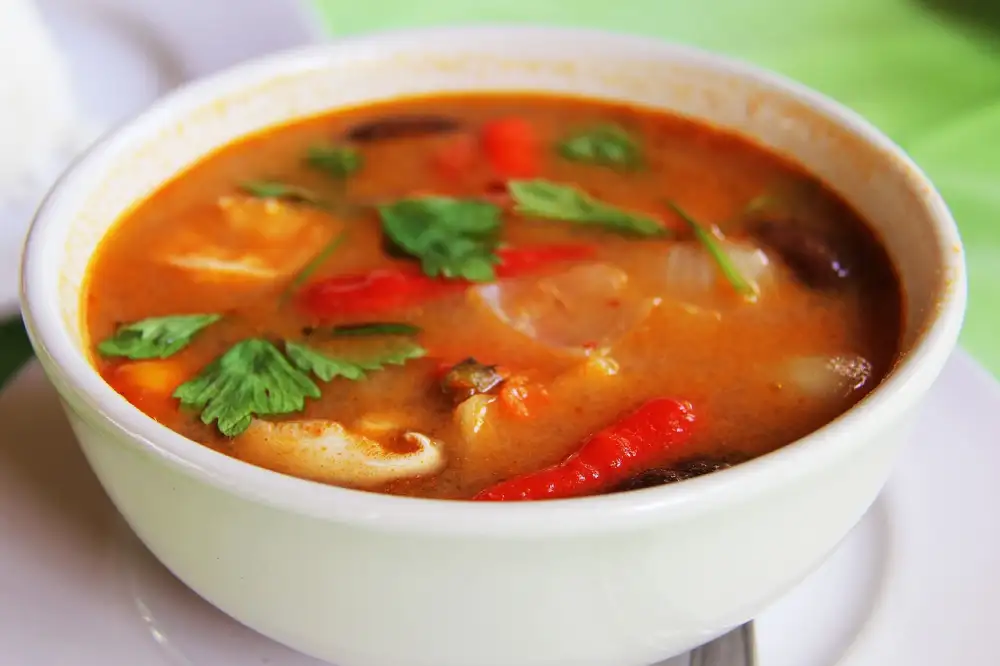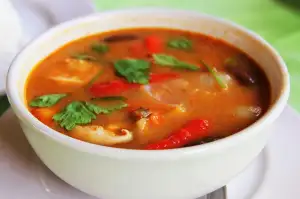Spice Up Your Palate with a Flavorful Vegetable Curry Recipe

Vegetable curry is a popular dish enjoyed by many around the world. It is a flavorful and aromatic dish that combines a variety of vegetables with a blend of spices and herbs, cooked in a rich and savory sauce. The dish is known for its vibrant colors, bold flavors, and versatility in terms of ingredients used. Whether you prefer it mild or spicy, vegetable curry offers a delicious way to enjoy a nutritious meal packed with vitamins, minerals, and antioxidants. Join us on a culinary journey as we explore the history, ingredients, cooking techniques, health benefits, and serving suggestions of this delectable dish.
History and Origin of Vegetable Curry
The history of vegetable curry dates back to the Indian subcontinent, where it is believed to have originated over 4,000 years ago. The word "curry" itself is thought to have been derived from the Tamil word "kari," which means sauce or relish for rice. Initially, curries were made with a combination of spices, herbs, and vegetables to create flavorful dishes that were both nutritious and satisfying. Over time, curry recipes spread to other parts of Asia, Africa, and eventually the rest of the world through trade routes and colonial influences. Today, vegetable curry remains a popular and versatile dish enjoyed by people of various cultures worldwide.
Ingredients Required for Making Vegetable Curry
To make a delicious vegetable curry, you will need a variety of fresh vegetables such as potatoes, carrots, bell peppers, peas, and cauliflower. Additionally, you will require aromatic spices like cumin, coriander, turmeric, and garam masala to create the rich and flavorful base of the curry. Other essential ingredients include onions, garlic, ginger, tomatoes for the sauce, coconut milk or yogurt for creaminess, and vegetable broth for added depth of flavor. Customize your curry by adding tofu or chickpeas for protein or adjusting the spice level to suit your taste preferences.
Step-by-Step Cooking Instructions for Vegetable Curry
1. Heat oil in a large pan and add chopped onions, garlic, and ginger. Sauté until fragrant.
2. Add your choice of vegetables such as potatoes, carrots, bell peppers, and peas to the pan.
3. Stir in curry powder or a mix of ground cumin, coriander, turmeric, and chili powder for a homemade blend.
4. Pour in coconut milk or vegetable broth to create a creamy base for the curry.
5. Simmer the mixture until the vegetables are tender and the flavors have melded together.
6. Season with salt and pepper to taste and adjust the spice level if needed.
7. Garnish with fresh cilantro or mint leaves before serving over steamed rice or with warm naan bread.
Enjoy this aromatic and flavorful vegetable curry as a satisfying meal that is both nutritious and delicious!
Variations and Regional Adaptations of Vegetable Curry
Variations and regional adaptations of vegetable curry are vast and diverse, reflecting the culinary traditions of different cultures. In India, you may find a rich and creamy North Indian vegetable curry with a tomato and cream base, while in South India, a spicier version with coconut milk is popular. Thai vegetable curries often feature ingredients like lemongrass and galangal for a unique flavor profile. In Japan, curry roux is used to create a thick and savory curry sauce with vegetables. Each region adds its own twist to this versatile dish, making it a truly global favorite.
Health Benefits of Vegetable Curry
Vegetable curry is not only a delicious dish but also a nutritious one packed with numerous health benefits. The combination of vegetables, spices, and herbs in a curry provides a range of vitamins, minerals, and antioxidants essential for overall well-being.
The vegetables in the curry are rich in fiber, which aids digestion and helps maintain a healthy weight. Additionally, they are a great source of vitamins A and C, important for immune function and skin health. The spices like turmeric, cumin, and coriander used in curry have anti-inflammatory properties that can help reduce inflammation in the body.
Moreover, the inclusion of garlic and ginger in the curry adds antibacterial and antiviral properties that can boost the immune system. The use of chili peppers can also help increase metabolism and aid in weight loss. Overall, vegetable curry is a wholesome dish that not only satisfies your taste buds but also nourishes your body from within.
Serving Suggestions and Accompaniments for Vegetable Curry
When serving vegetable curry, it is best accompanied by fluffy basmati rice or warm naan bread to soak up the flavorful sauce. For a complete meal, you can also pair it with a side of cooling cucumber raita or tangy mango chutney to balance out the spiciness. Fresh cilantro leaves and a squeeze of lime juice on top can enhance the flavors and add a refreshing touch to the dish. A side salad with a light vinaigrette dressing can provide a crisp contrast to the rich curry. Experiment with different accompaniments to find your perfect combination and elevate your vegetable curry experience.
In conclusion, vegetable curry is a versatile and flavorful dish that has stood the test of time, originating from the Indian subcontinent and spreading its influence worldwide. Its rich history, diverse ingredients, and adaptability make it a beloved choice for vegetarians and food enthusiasts alike. With its numerous health benefits and ability to be customized to suit different tastes and dietary preferences, vegetable curry truly is a culinary delight that can spice up any meal. So next time you're looking to add some excitement to your palate, give vegetable curry a try - you won't be disappointed!
Published: 08. 04. 2024
Category: Food



